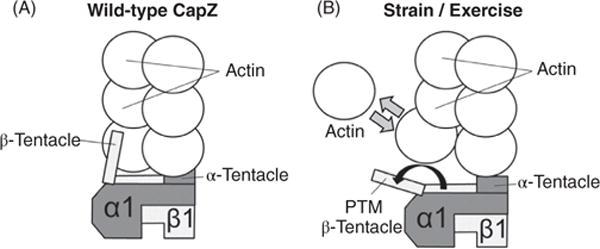Figure 12.

CapZ dynamics at the barbed end of F-actin. (A) CapZ has two subunits: α1 and β1 each with a tentacle that binds one terminal actin. Tightly capped F-actin has a low actin off rate. (B) Following mechanical stimulation (to simulate exercise), the β tentacle undergoes a structural change via post-translation modification (PTM) including phosphorylation on serine-204 and acetylation on lysine-199. The β tentacle shifts off the terminal actin, which increases actin monomer exchange. Regulation of actin dynamics at the barbed end may also play a key role in both skeletal and cardiac hypertrophy. [Fig. modified, with permission, from (381).]
